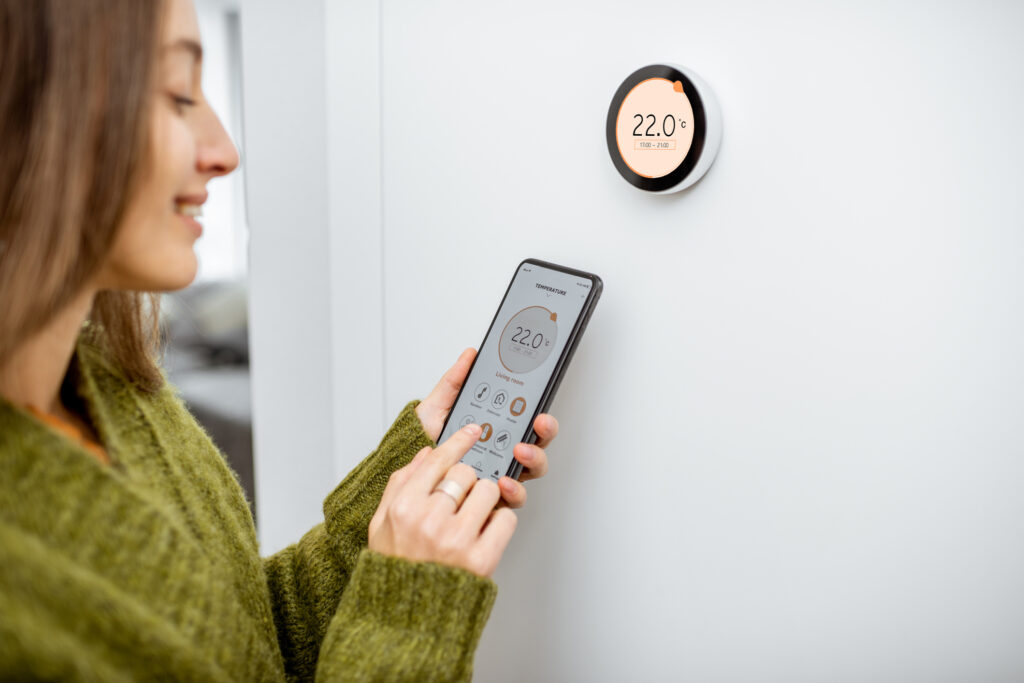Are you fascinated by technology? Want to work outside the office? If this sounds like you, consider becoming an HVAC technician. Let Interactive College of Technology teach you about the technology that powers the future of HVAC. With a diploma in HVAC, you can help others stay comfortable indoors and enjoy a challenging career at the same time. It’s a win-win.
What is HVAC?
HVAC stands for heating, ventilation, and air conditioning. This includes the heating and cooling of residential and commercial buildings. In addition to keeping the indoor space warm or cool, an HVAC system can also improve air quality through ventilation.
What are the Components of an HVAC System?
Many essential components make up an HVAC system. They include:
Air Conditioner – helps cool an indoor space by removing heat and humidity from inside and moving it outside the structure.
Heat Pump – uses refrigerant to absorb, transport, and release heat for heating and cooling.
Furnace – creates heat distributed throughout a residential or commercial building to increase the indoor temperature.
Air Handler – helps circulate warm and cool air from an HVAC system to create a comfortable temperature within an indoor space.
Ductwork – a system of pipes or sheet metal that carries and distributes air from a furnace, air conditioner, or heat pump. Ductwork can also help improve air quality within the indoor space.
Thermostat – allows the homeowner or business owner to control the indoor temperature. Changing the thermostat’s temperature signals the HVAC system to heat or cool the indoor space.
PLC – programmable logic controller is used to automate the heating and cooling of an HVAC system.
What is PLC in HVAC?
One of the biggest technological advances in the HVAC industry is the programmable logic controllers (PLC) are industrial computers that allow an HVAC system to access the Internet. The PLC can control the temperature, air pressure, humidity, air quality, airflow, and zoning within a structure to monitor, adjust, and automate the heating and cooling of a residential or commercial building. The PLC can also run diagnostics and tell the HVAC system to implement certain functions to improve efficiency. This is a very intricate device that any HVAC technician must learn to check, install, or repair.
The PLC is fast, flexible, and reliable. It can offer total control over the indoor environment. The PLC provides real-time system performance feedback. It uses algorithms to respond to changes in inputs from temperature, pressure, and environmental sensors to control the HVAC systems equipment. It can turn on the fan or open and close dampers or valves. Over time, the algorithm will better anticipate the residents’ needs to improve energy efficiency and reduce costs. The PLC will include the following components:
Thermostat – the central mechanism to control the HVAC system. It measures the temperature and then instructs the rest of the HVAC system to heat or cool the zone based on the residents’ specifications.
Sensors – monitor the indoor climate, to measure humidity, carbon dioxide and occupancy to assist the HVAC system in adjusting the controls to make the zone comfortable.
Dampers – help regulate the flow of air through the HVAC system.
Controls – helps manage the operation of the HVAC equipment. These controls can be accessed remotely with a mobile-enabled device.
Final Thoughts
Now that you know more about the technology behind HVAC systems, it is time to learn about Interactive College of Technology (ICT). The education at ICT is more complete than any internship or on-the-job training because you will learn the complete system. In addition to PLCs, you can learn about comfort systems, electrical circuits, HVAC/R computer fundamentals, low-voltage controls, and thermostats. This HVAC program offers in-class theory and hands-on training in real-life scenarios, so you are ready to work with PLCs, smart thermostats, and other technology when you start your new career as an HVAC technician.
Want to Learn More?
This heating, ventilation, and air conditioning residential program offers training in all phases of repair and maintenance of residential heating, ventilation, and air conditioning systems. The HVAC technician program also includes the Environmental Protection Agency (EPA) Certifications in the management of refrigerants and North American Technicians Excellence (NATE) Certifications.
An externship is a part of the heating, ventilation, and air conditioning residential training program and assigns you to a partnering company for 135 hours, allowing you to put your new skills to use and gain real-life career training experience. Plus, after you graduate, our Lifetime Career Placement Support program will be there to help you find work whenever you need it.
Let’s take the first step together! Contact us now to learn more.









